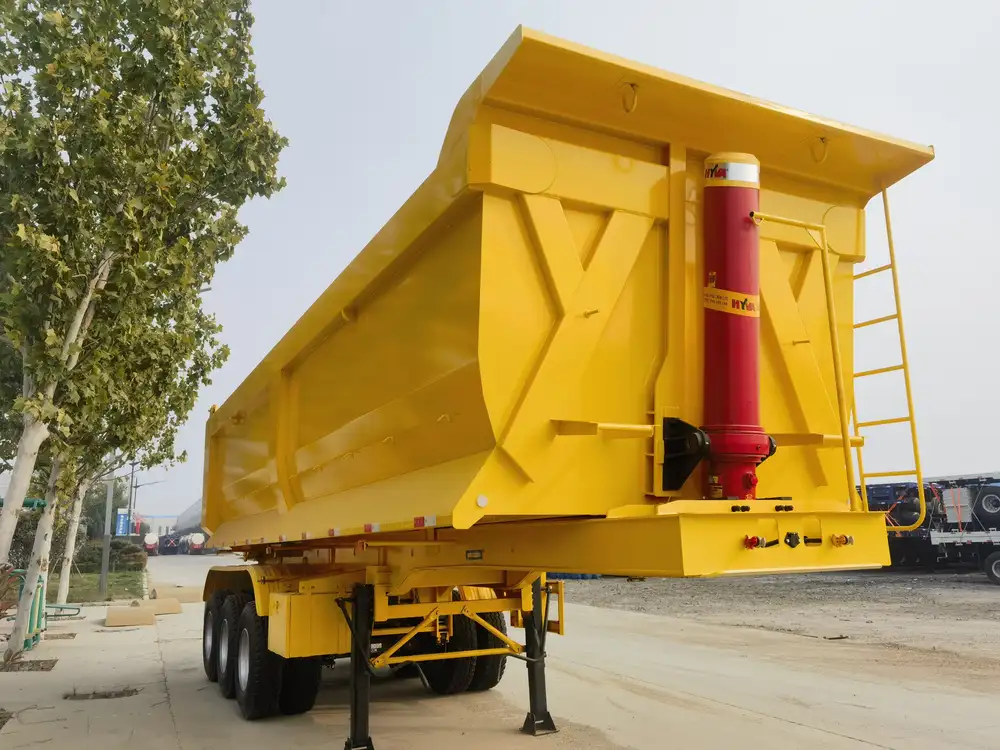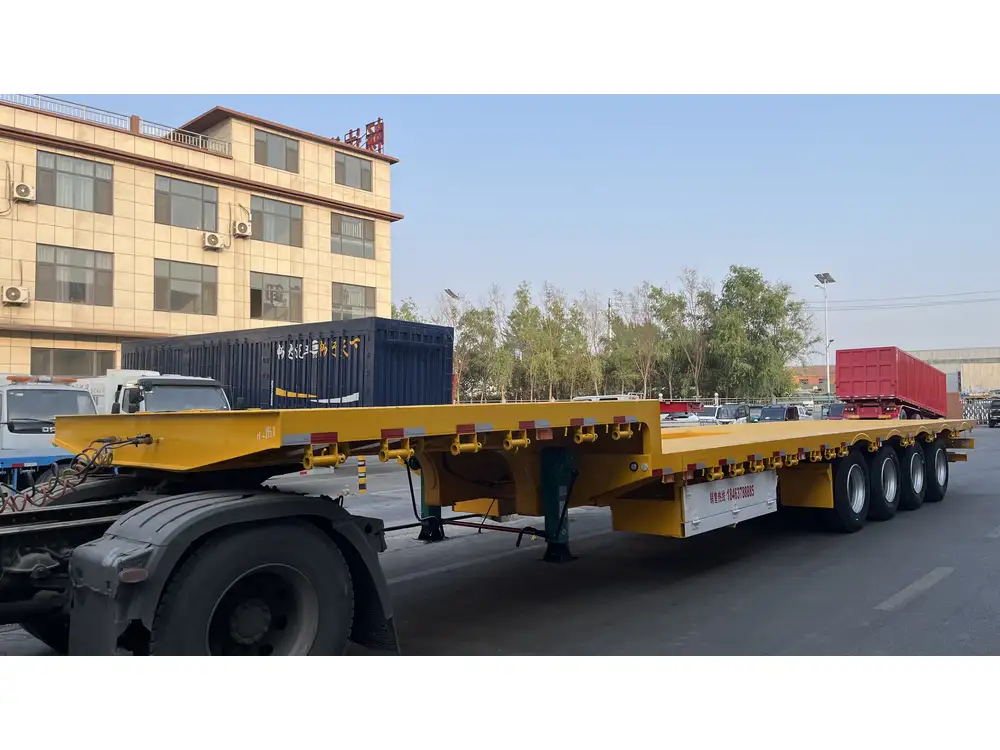Understanding Hydraulic Systems in Dump Trailers
Dump trailers are essential in various industries, ranging from construction to agriculture, due to their capability to transport and efficiently unload materials. At the heart of a dump trailer’s functionality lies its hydraulic system, which utilizes hydraulic pumps to facilitate lifting heavy loads with ease. To ensure optimal performance, selecting the appropriate hydraulic pump size is crucial.
The Basics of Hydraulic Pumps
Hydraulic pumps convert mechanical energy into hydraulic energy, allowing fluid movement through the hydraulic system. This movement enables the lift cylinder to raise the trailer bed. The efficiency, speed, and performance of the dump trailer largely depend on the size and type of the hydraulic pump used.

Key Factors in Determining Pump Size
Several parameters need to be considered to determine the correct hydraulic pump size for your dump trailer:
- Load Capacity: The total weight of the load being lifted.
- Lift Cylinder Specifications: The diameter and stroke length of the lift cylinder.
- Operating Speed: Desired speed at which the lift cylinder should operate.
- System Pressure: The maximum pressure at which the hydraulic system will operate.
- Pump Flow Rate: Measured in gallons per minute (GPM), the flow rate is critical for achieving the desired lift speed.
Hydraulic Pump Flow Rate Calculation
Formula for Optimal Flow Rate
To calculate the required flow rate (GPM) of your hydraulic pump, one can utilize the following formula:
[ \text{Flow Rate (GPM)} = \frac{\text{Cylinder Bore Area (square inches)} \times \text{Cylinder Stroke (inches)} \times 60}{231} ]Where 231 is a constant that converts cubic inches to gallons.

Example Calculation
Consider a scenario where a dump trailer with a cylinder bore diameter of 4 inches and a stroke of 20 inches is used to lift a payload of 5,000 lbs.
- Calculate the area of the cylinder:
- Compute the flow rate:
Thus, for this particular setup, a hydraulic pump that delivers at least 6.53 GPM would be ideal.
Selecting the Right Hydraulic Pump Size
Assessing Your Requirements
After calculating the required flow rate, it’s important to consider additional technical specifications that affect pump selection:
Pump Type: Options typically include gear pumps, vane pumps, or piston pumps:
- Gear Pumps: Commonly used for lower pressure systems and easy maintenance.
- Vane Pumps: Offer higher efficiency but can be sensitive to fluid cleanliness.
- Piston Pumps: Ideal for high-pressure applications and extended service life but typically more expensive.
Maximum Working Pressure: Ensure the pump can handle the desired operating pressure of your hydraulic system.

Comparative Analysis of Hydraulic Pumps
| Pump Type | Flow Rate Range (GPM) | Pressure Range (PSI) | Pros | Cons |
|---|---|---|---|---|
| Gear Pumps | 1 – 100 | Up to 3000 | Simple, cost-effective | Less efficient at high pressures |
| Vane Pumps | 1 – 80 | Up to 3000 | Efficient, smoother operation | Sensitive to contamination |
| Piston Pumps | 1 – 200 | Up to 5000 | High efficiency, robust construction | Higher cost, more complex |
Common Pump Sizes for Dump Trailers
- 10 GPM Pump: Suitable for smaller trailers carrying lighter loads (up to 5 tons).
- 20 GPM Pump: Ideal for most standard dump trailers capable of handling up to 10 tons.
- 30 GPM Pump: Used in heavy-duty trailers, supporting loads over 10 tons, requiring faster lift cycles.
Additional Considerations

Hydraulic Fluid Specification
Selecting the right hydraulic fluid is crucial for efficient operation. Considerations include viscosity, temperature stability, and potential environmental impacts. Common selections include:
- Mineral Oil: Offers good performance but may not be suitable for all environments.
- Biodegradable Fluids: Environmentally friendly options that provide good lubrication properties.
System Maintenance Tips
Ensuring long-term performance involves regular maintenance:
- Check Fluid Levels: Low hydraulic fluid can result in pump cavitation.
- Inspect Hoses and Fittings: Look for signs of wear, leaks, and deteriorating materials.
- Change Fluids: Periodically change hydraulic fluid according to manufacturer recommendations to prevent contamination.
Troubleshooting Common Issues
Understanding common pitfalls can save time and money:
- Pump Overheating: May indicate a low fluid level or blocked intake filter.
- Slow Operation: Could be due to inadequate pump size, air in the system, or leaks.
- Excessive Noise: Often a symptom of cavitation or bearing wear.

Conclusion: Achieving Optimal Performance with the Right Pump
Selecting the appropriate hydraulic pump for your dump trailer is paramount to achieving efficient, reliable performance. The complexity of this task lies in understanding the interplay between various factors, from load capacities to hydraulic system design.
By utilizing the calculations and considerations discussed, you will be well on your way to making an informed decision that enhances the reliability and efficiency of your dump trailer operations. Whether you are managing a small landscaping trailer or a heavy-duty construction vehicle, the right hydraulic pump will ensure that your trailer functions smoothly and effectively, meeting the demands of any job site.
For ongoing support and superior-grade hydraulic solutions, we invite you to explore our extensive catalog of hydraulic pumps and components, designed explicitly for dump trailers and beyond. Your project’s success depends on the quality of your equipment, and with the right hydraulic system, we are confident that your operations will not only meet but exceed expectations.



